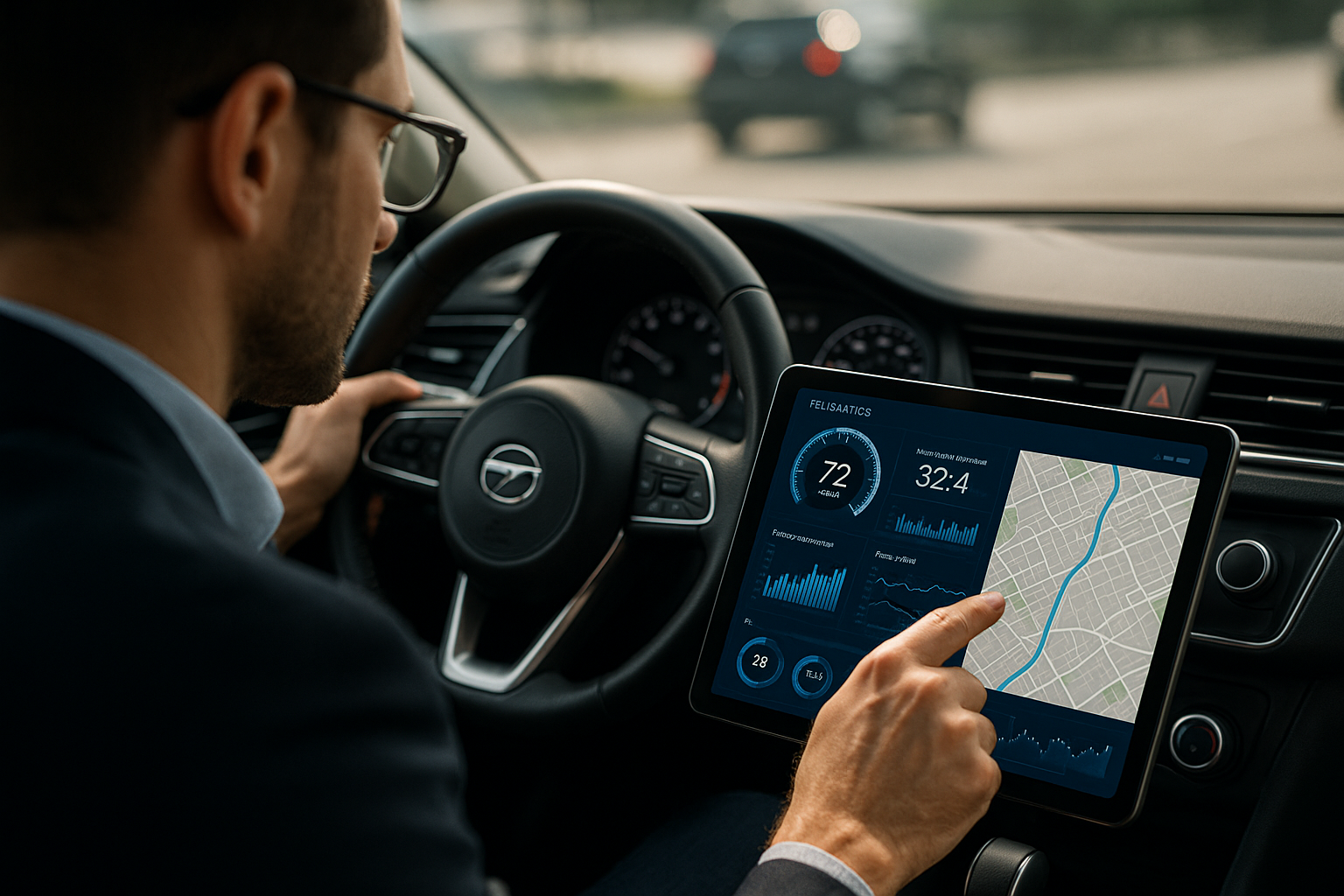Mid-Size SUV Guide 2025: What UK Seniors Should Know Before Buying
Mid-size SUVs remain a strong choice for senior drivers in the UK, offering balanced dimensions, good visibility and comfortable driving. This guide outlines current price trends, useful features and important considerations for those planning to choose a mid-size SUV in 2025.

The mid-size SUV segment has grown substantially in recent years, with manufacturers responding to demand for vehicles that combine the practicality of family cars with enhanced visibility and comfort. For senior drivers and passengers, these vehicles often provide easier entry and exit compared to lower-slung saloons, along with generous boot space for shopping, mobility aids, or luggage for longer journeys.
Mid-Size SUVs in the UK – Market Overview for 2025
The UK market for mid-size SUVs continues to expand, with both established manufacturers and newer entrants competing for attention. These vehicles typically measure between 4.5 and 4.8 metres in length, offering five seats as standard and often available with seven-seat configurations. The segment includes both traditional combustion engines and increasingly popular hybrid or fully electric powertrains. Consumer preferences have shifted noticeably toward models with lower emissions, driven partly by government regulations and urban clean air zones. Many manufacturers now offer mild-hybrid technology as standard across their ranges, with plug-in hybrid and battery-electric variants becoming more accessible. The variety available means buyers can select vehicles suited to different driving patterns, from primarily urban use to regular motorway journeys or countryside exploration.
Price Ranges and Factors That Influence Costs
Understanding the financial commitment involved in purchasing a mid-size SUV helps seniors make informed decisions that align with their budgets and needs. Prices vary considerably based on several factors including brand reputation, powertrain type, trim level, and optional features.
Entry-level mid-size SUVs from mainstream manufacturers typically start around £28,000 to £32,000 for petrol or diesel variants. Mid-range models with enhanced equipment and technology packages generally fall between £35,000 and £42,000. Premium brands command higher prices, with their mid-size offerings often starting from £40,000 and extending beyond £55,000 for well-equipped versions. Hybrid models usually add £3,000 to £6,000 to the base price, while fully electric mid-size SUVs currently range from approximately £40,000 to £60,000, though government incentives may reduce the effective cost.
Factors influencing price include engine size and type, transmission choice (manual versus automatic), interior materials, infotainment system sophistication, driver assistance technologies, and wheel size. Optional packages for leather upholstery, panoramic sunroofs, or advanced sound systems can add several thousand pounds to the final price.
| Vehicle Type | Price Range (GBP) | Typical Features |
|---|---|---|
| Entry-Level Petrol/Diesel | £28,000 - £32,000 | Standard safety features, basic infotainment, cloth interior |
| Mid-Range Equipped | £35,000 - £42,000 | Enhanced driver aids, upgraded materials, larger touchscreen |
| Premium Brand Models | £40,000 - £55,000+ | Luxury interior, advanced technology, premium audio |
| Hybrid Variants | £31,000 - £48,000 | Improved fuel economy, reduced emissions, regenerative braking |
| Fully Electric | £40,000 - £60,000 | Zero emissions, lower running costs, government incentives |
Prices, rates, or cost estimates mentioned in this article are based on the latest available information but may change over time. Independent research is advised before making financial decisions.
Important Features for Everyday Comfort and Safety
For senior buyers, certain features significantly enhance the ownership experience and daily usability of mid-size SUVs. Comfort-related considerations include seat height and adjustability, door opening width, grab handles for easier entry, and lumbar support for longer journeys. Many modern SUVs offer electrically adjustable seats with memory functions, allowing drivers to find their ideal position quickly.
Visibility ranks highly in importance, with large windows, slim pillars, and elevated driving positions providing better sightlines in traffic. Reversing cameras and parking sensors have become standard on most models, with some offering 360-degree camera systems that simplify manoeuvring in tight spaces. Climate control systems with separate zones allow driver and passengers to maintain their preferred temperatures independently.
Safety technologies have advanced considerably, with features such as autonomous emergency braking, lane-keeping assistance, blind-spot monitoring, and adaptive cruise control now widely available. These systems can reduce driver fatigue and provide additional protection in challenging situations. Some manufacturers include these as standard equipment, while others offer them in optional safety packages.
Popular Mid-Size SUV Options and What Sets Them Apart
Several models have established strong reputations within the UK market, each offering distinct characteristics. The Nissan Qashqai pioneered the crossover segment and remains popular for its comfortable ride, practical interior, and competitive pricing. The Hyundai Tucson attracts buyers with its bold styling, comprehensive warranty, and generous standard equipment levels.
The Mazda CX-5 earns praise for its engaging driving dynamics and upscale interior quality, while the Kia Sportage combines value with modern technology and a seven-year warranty. Premium options include the Volvo XC60, known for its Scandinavian design and advanced safety systems, and the BMW X3, which emphasizes driving enjoyment alongside practicality.
Electric alternatives such as the Tesla Model Y and Volkswagen ID.4 offer zero-emission motoring with impressive range figures, though their higher purchase prices require consideration against potential fuel savings over time. Each model presents different strengths, making test drives essential for determining which best suits individual preferences and requirements.
Efficient and Low-Emission Powertrains in Mid-Size SUVs
Environmental considerations and running costs increasingly influence vehicle choices, with mid-size SUVs now available with various efficient powertrain options. Mild-hybrid systems, which use small electric motors to assist petrol or diesel engines, improve fuel economy by 5-15 percent compared to conventional engines while adding minimal cost. These systems operate transparently, requiring no charging infrastructure or changes to driving habits.
Plug-in hybrid models combine larger batteries with combustion engines, offering 30-50 miles of electric-only range suitable for most daily journeys. Owners can charge at home overnight or use public charging points, with the petrol engine providing extended range for longer trips. Real-world fuel economy depends heavily on charging frequency, with regular charging delivering significant savings.
Fully electric mid-size SUVs eliminate tailpipe emissions entirely and offer lower per-mile running costs, with typical ranges between 250 and 350 miles on a single charge. Charging infrastructure continues expanding across the UK, though home charging provides the most convenient option for those with off-street parking. Consideration of typical journey patterns helps determine whether electric range meets practical needs.
Practical Considerations Before Making a Decision
Beyond the vehicle itself, seniors should consider ongoing costs including insurance, servicing, and potential depreciation. Mid-size SUVs from mainstream brands typically cost £600-£900 annually to insure, though individual circumstances affect premiums. Service intervals generally occur annually or every 12,000-15,000 miles, with costs varying by manufacturer and powertrain type.
Test driving multiple models in realistic conditions provides valuable insight into comfort, visibility, and ease of use. Many dealerships offer extended test drives or home demonstrations, allowing evaluation without pressure. Checking boot accessibility, seat adjustability, and control intuitiveness during these drives helps identify potential issues before purchase.
Financing options include outright purchase, personal contract purchase agreements, and leasing arrangements, each with different implications for ownership and monthly costs. Comparing total costs over the intended ownership period rather than focusing solely on monthly payments provides clearer financial understanding. Consulting with family members or independent advisors can offer additional perspectives on significant purchases.




